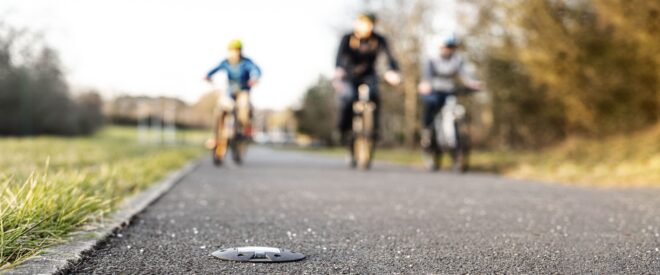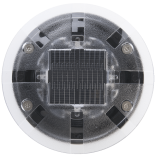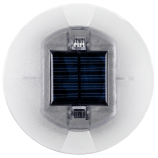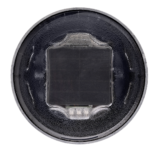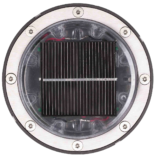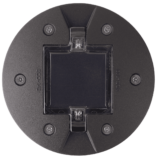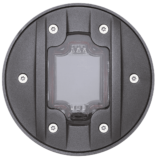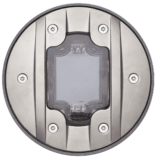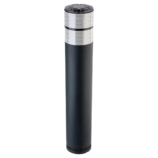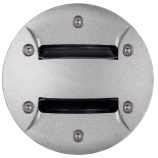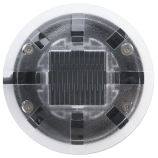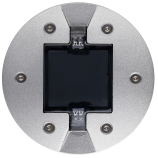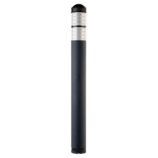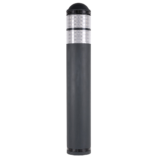Eco-friendly means of transportation, also known as active modes, are means of travel that do not generate pollution or greenhouse gases. They include walking, cycling, rollerblading, scootering, skateboarding, etc.
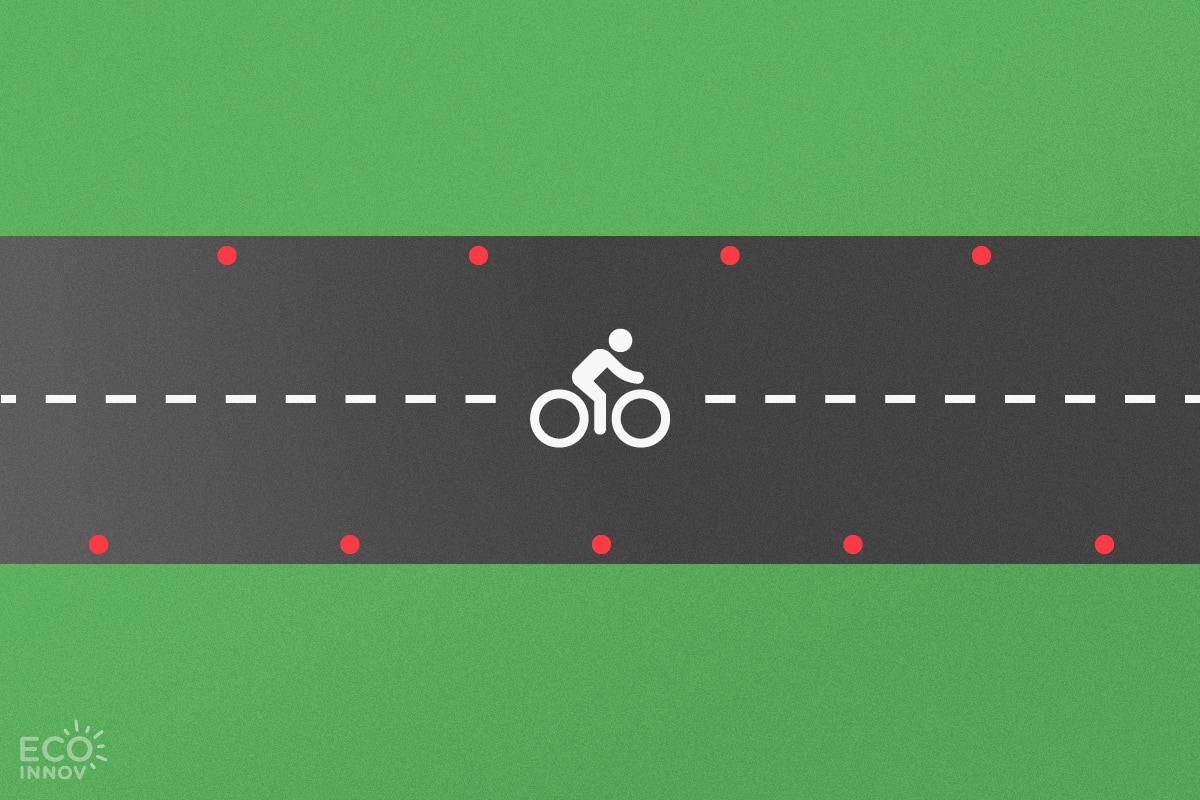
The increase in the use of eco-mobility transportation is excellent news for the community (health, environment), but the speed of this growth and the slow adaptation of dedicated facilities are likely to generate conflicts between users and accidents. We therefore need to support these uses in order to offer maximum safety and comfort to those who embrace these forms of mobility. With this in mind, illuminated beacons have many uses, ranging from safety to simple enjoyment for users.
The different types of cycling facilities are :
A/ The bike route
It is designed to run directly along the carriageway and is typical of urban areas. The recommended width is typically of 1.5m.
B/ The cycle lane
It is defined by art. R110-2 of the French Highway Code as being a carriageway reserved exclusively for two- or three-wheeled cycles. It is indicated by the C113 sign or by the regulatory marking (+ pictogram) when it is optional, or by the B22a sign when it is compulsory.
There are two different types of cycle path:
- cycle paths away from the carriageway
- cycle paths adjacent to the carriageway
These include cycle paths at an intermediate height between pavement and roadway, cycle paths between pavement and parking area, and cycle paths at pavement level. One rule in the design of these facilities is to offer clear, legible and forgiving separations (from other road users).
C/ Greenway
This is a road reserved exclusively for non-motorised vehicles, pedestrians and horse riders (Art. R. 110-2 – French road safety rules). It is indicated by the C115 sign.
Cyclists are therefore permitted on these roads by law, with no speed limit, and pedestrians are permitted in all directions. It is up to users of these roads to show mutual respect (particularly for cyclists, who are faster users).
Safety light beaconing on cycle paths
In a context where cyclists have to cohabit with cars and heavy vehicles to a greater or lesser extent depending on the situation, it can be beneficial to add illuminated or retro-reflective markings. Illuminated markings can be used to protect cyclists, guide those with inadequate lighting or indicate protruding obstacles (kerbs, verges, steel posts, etc.).
The following points should be borne in mind when installing solar-powered lighting on a road mainly used by bicycles and cycles:
- Use of low-profile illuminated studs for user comfort,
- Use of low-angle, directional lighting to direct the beam only at the users concerned, and not to generate light pollution towards the sky,
- On sites rich in biodiversity (greenways, for example), give preference to LEDs with warm colour temperatures such as 2700K white, amber or red, which are less harmful to insects,
- If the studs are installed at the edge of the road, beware of the vegetation, which can quickly cover the photovoltaic panel or mask the LEDs. In this case, it is preferable to install the panels at the centre of the road,
- Favour studs that allow maintenance, which will ensure a longer service life for the installation, especially as this operation will be easier to organise on a cycle path than on a road.
Sustainable lighting for cycle paths with Eco-Innov illuminated studs
Eco-Innov’s illuminated cycle path studs offer a sustainable, environmentally-friendly and highly effective solution for lighting and making cycle paths safer. Thanks to their advanced solar technology, these studs are autonomous and do not require connection to the electricity grid, making them an environmentally-friendly solution that is easy to install in a variety of urban or natural settings.
Possible layouts for beacons and markers on cycle paths

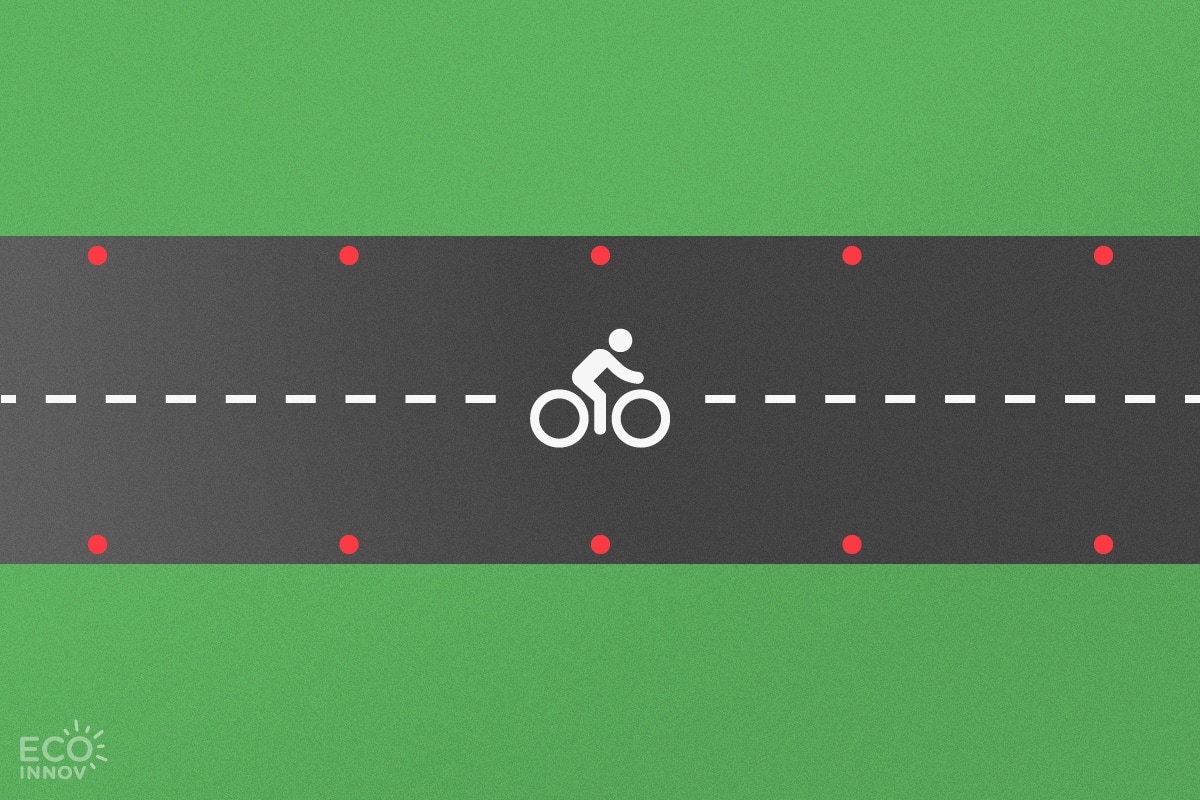
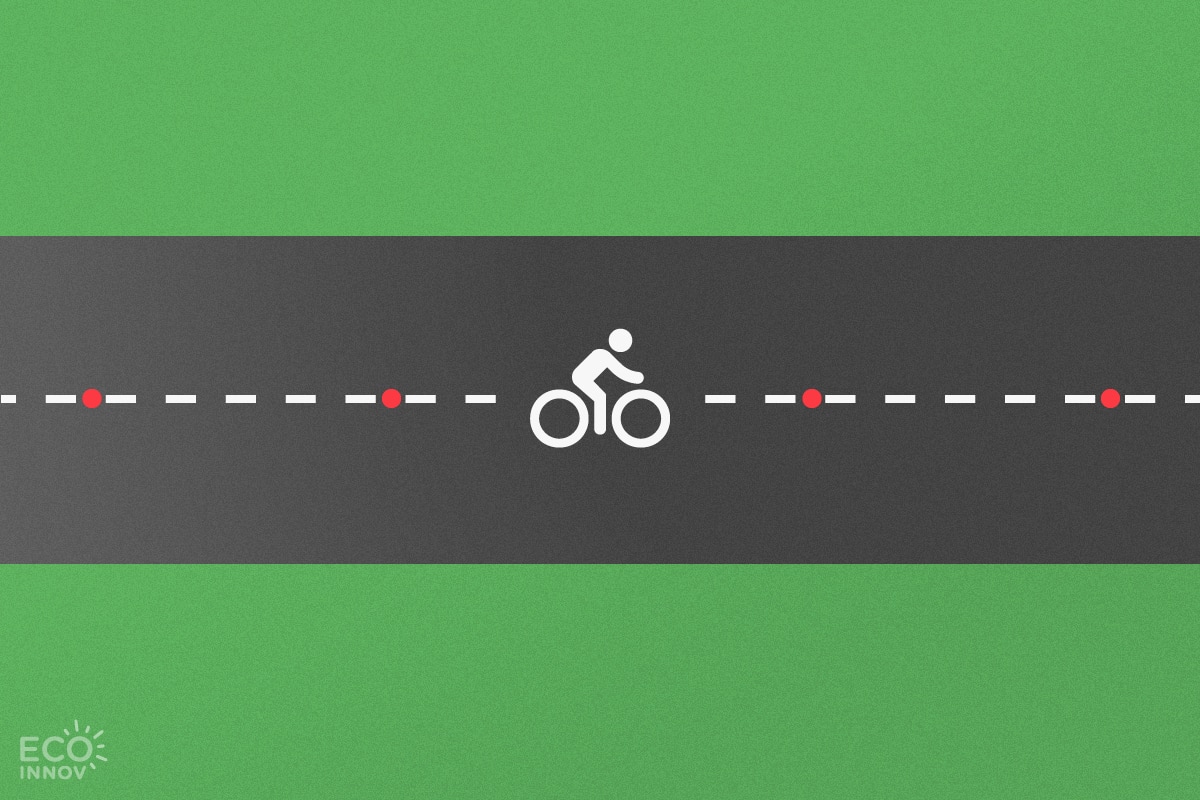
Prévention des risques sur piste cyclable
Illuminated beacons also play an essential role in accident prevention by clearly signalling areas of potential conflict, such as intersections, lane entrances or areas shared with pedestrians. By increasing visibility in these areas, LED beacons help to create a safer shared space for all road users.
The installation of LED studs along cycle paths also helps to encourage the use of bicycles as an alternative means of transport, making night-time journeys safer and more pleasant. This can have a significant impact on reducing urban congestion and cutting air pollution, bringing urban planning objectives into line with the imperatives of sustainable development.
The information provided by Eco-Innov is for information purposes only and does not constitute contractual advice. Eco-Innov accepts no responsibility for the accuracy, completeness or suitability of the proposed applications. Implementation advice, recommendations, and other information presented by Eco-Innov may not reflect current or future standards. Standards may evolve, and it is the user’s responsibility to check the regulations in force and to comply with them, particularly when they are installed on roads open to public traffic.
Eco-Innov cannot be held responsible for any direct or indirect consequences resulting from the use, interpretation or implementation of the proposed solutions. The user is encouraged to consult competent professionals and to comply with the standards and regulations in force in their country or jurisdiction. Eco-Innov reserves the right to update, modify or delete any information without notice. By using the information provided by Eco-Innov, the user acknowledges having read, understood and accepted these terms. Read More
